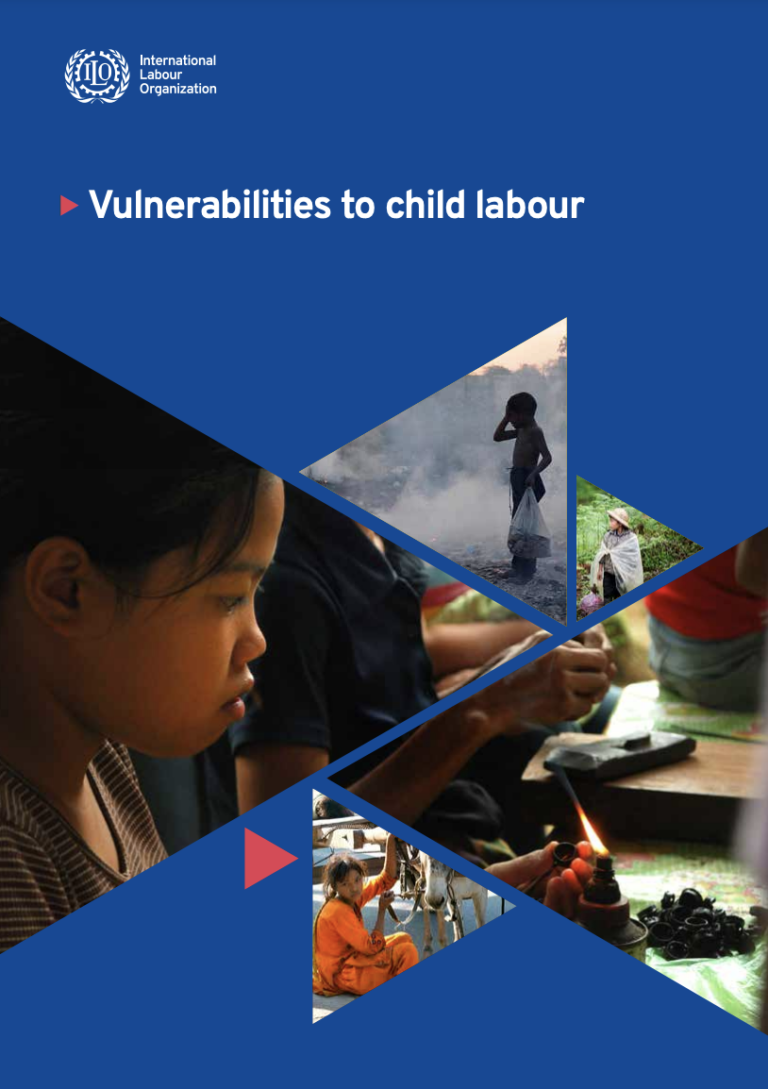Identifying particularly vulnerable groups of children and their specific needs is essential for the elimination of child labour. Article 7 of International Labour Organization (ILO) Convention No. 182 on the Worst Forms of Child Labour, 1999 – the first Convention to achieve universal ratification by all 187 member States – requires ratifying states to “identify and reach out to children at special risk”.
This brief brings together the key findings from four studies that each address a key area of vulnerability to child labour: (1) vulnerabilities associated with the impacts of climate change (2) vulnerabilities associated with situations of crisis; (3) vulnerabilities faced by indigenous peoples; and (4) vulnerabilities associated with informality. For each of the thematic areas, the brief presents evidence of the linkages with child labour and implications for policy.
These four areas were identified as among those where knowledge gaps are particularly pronounced. They are by no means an exhaustive listing of the vulnerabilities that can drive children’s involvement in child labour, but, either singly or in combination, affect a large proportion of the 160 million children who are still in child labour worldwide.
It is critical that child labour considerations are mainstreamed into policy responses designed to mitigate these vulnerabilities. Achieving the 2025 deadline for ending child labour in all its forms under Target 8.7 of the Sustainable Development Goals (SDGs) will not be possible without adequate consideration to the risks of child labour associated with climate change, situations of crisis and informality. Nor will it be possible without bespoke policies to ensure the rights of indigenous peoples.

